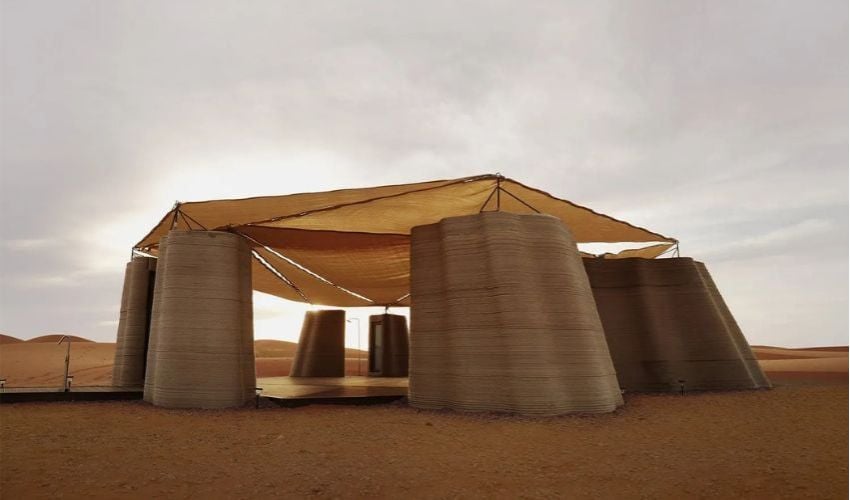Desert Ark: The First 3D-Printed Concrete Structure in the Chinese Desert

The Chinese architecture studio designRESERVE presents Desert Ark, a series of 3D-printed modules installed in the Tengger Desert in the Inner Mongolia Autonomous Region of China. These small shelters were designed for volunteers planting trees and reforesting this arid part of the country. Covering a total area of 150 square meters, the space comprises nine independent units—bedrooms, kitchens, living rooms, showers, and toilets—arranged around a shared terrace. Created using 3D printing with concrete, specifically a mixture of cement and sand, this project is further proof of the versatility of additive manufacturing and demonstrates its ability to reach even remote areas like the desert.
It should be noted, however, that the printing itself did not take place in the middle of this arid and demanding region. The architecture studio printed the various spaces in a dedicated factory, simply to guarantee the best possible results – the weather conditions would almost certainly have affected the printing process and the quality of the modules. In any case, on-site assembly took two days. The teams also specify that these modules are intended to be moved, depending on the progress of the area’s reforestation efforts.

Each module has a different function: dining room, resting room, kitchen, etc.
Each module is 3D printed in a factory using a robotic arm that deposits successive layers of material. The studio opted for a corrugated design and a layered texture to better withstand the region’s strong winds. They also integrated a cavity in the walls for insulation, allowing each module to withstand temperatures ranging from -30°C to 45°C. Three sizes are available: the small cabin measures 1.4 x 2 x 2.5 m; the medium 3 x 2.4 x 2.7 m; and the largest 4.1 x 2.5 x 2.7 m.
Once printing was complete, the modules were transported to the desired site. They can be placed directly on the sand, without the need for deep excavation. After the installation was complete, the teams covered the deck with a retractable awning. Photovoltaic solar panels power the modules and reduce Desert Ark’s environmental impact.

All the 3D-printed modules open onto a terrace
Volunteers participating in the reforestation of this region can now rely on practical spaces to rest and recharge. The architecture studio hopes that, beyond this role, these structures can serve as dwellings in remote areas or extreme environments. One thing is certain: their mobile and modular design is very practical! Feel free to check out the studio’s other projects HERE.
What do you think of Desert Ark?
*Alll Photo Credits: Rangers of Edge-locking Forest, Huaer Lin







